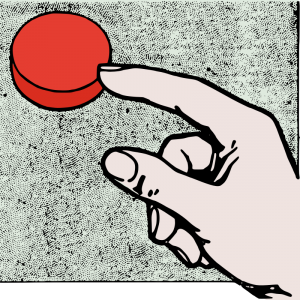Art of Column Writing
By Suzette Standring
2004-06 President
National Society of Newspaper Columnists

Suzette Standring
There are aspects aplenty to controversy. When tackling fifty shades of truth, being “gray” doesn’t grow a readership. Yet life is never black and white. Family. Politics. Feminism. Race. Religion.
How best to take a decisive stand on polarizing topics? It’s not a writing formula, it’s a mindset, and the following columnists share theirs.
Mary C. Curtis, Charlotte, North Carolina, multimedia journalist for NPR, The Root, MSNBC, Women’s Media Center and other media outlets:
“I write about culture, politics and race, and you can’t get more controversial than that. I try to really listen to all points of view. When you acknowledge opposing views, you can actually make your own reporting and arguments stronger.
“I venture into spaces and conversations that may make me uncomfortable. And I treat everyone with respect. You can give people space to disagree, and that may lead them to understanding, if not agreement. I explain my own reasoning and reporting so that people can see how I came to my conclusions in a column.
“Give yourself the literal and emotional space to keep your sanity and focus when all the noise threatens to distract you and take you off focus.
“Be fair, but, ultimately, be authentic. Understand the consequences of reporting on controversial topics, but don’t let that make you self censor. If you do, the complete story will not be told.”
Bill Tammeus, Faith Matters daily blog, column in the National Catholic Reporter:
[NOTE: In the June membership newsletter, the next two paragraphs were misattributed to Gina Barreca.]
 “When I write an opinion piece about a hot-button topic, I try to acknowledge that no one, including me, has all the truth. But I also try to explain why I take the position I do and how I came to that.
“When I write an opinion piece about a hot-button topic, I try to acknowledge that no one, including me, has all the truth. But I also try to explain why I take the position I do and how I came to that.
“If I have the time and space, I also try to give a bit of historical background to explain how the issue has played out over time and, thus, how we got to today’s fight. The last thing I want to do, however, is to let people think that they will have the final word on this matter. That should — but rarely does — instill in them a bit of humility.”
Gina Barreca, columnist for The Hartford Courant and professor of English and feminist theory, University of Connecticut:
“When writing about a controversial topic, I try to find the outer edge of my own perspective — push it as far as I can go — and anticipate (in one line or two, but not more) what the other side will say and dismantle their angle by undermining it with humor. A short piece of writing CANNOT fairly present a many-sided argument. A columnist’s job is to get the conversation going, not to control the direction it takes. The sharper and more pointed your own argument, the more you’ll get readers to pay attention. They might hate you but they’ll keep reading.”
Dave Lieber, The Watchdog columnist, The Dallas Morning News:
“Call both sides quickly. Then call them back and tell them what each side said about the other. When the dust settles, you’ll have a better idea of the players’ credibility, importance of the story and the finer details so you can tell it simply for everyday readers. You show your passion for the subject and the audience will share your passion. Passion only develops, though, from knowledge, which is only gained from reporting. Without reporting first, you’ve got nothing.”
Rick Horowitz, wordsmith in chief, Prime Prose LLC:
“1. Understand that some people will disagree with you. (That’s what the term ‘controversial topics’ means.)
“2. Try not to take their disagreement personally. (Then try again.)
“3. Remind yourself that if everybody agrees with everything you’re saying, you may not be saying enough.”
Bonnie Jean Feldkamp, freelance writer for parenting publications, member of the Parent Media Association:
“Context is key. It’s easier to have compassion for any side of any issue if you give it context. Stats are easy to judge. Human experience, on the other hand, evokes emotion and inspires compassion. When writing about tough topics, I strive to balance the stats and facts with what they mean in real life for whom it affects. If I’m writing in first person I expose my own vulnerabilities – it’s scary because someone somewhere will judge me. But usually the response is one of kindness. We all have our stories. Each one of them valid. Contemptuous words and judgment happens when someone feels threatened or put on the defense. A journalist can remove that bristling effect when the context brings the circumstances close to home for the reader. Every reader brings their own baggage to the page. One’s vulnerability is often one’s greatest strength. If we communicate safely within those emotions, I really think that’s where we can find middle ground, respect for differences and peace.”
Now, an ending thought from me, Suzette:
Readers are inspired to be braver and better when you are.
• • •
Email Suzette Martinez Standring at suzmar@comcast.net or visit the newly revamped www.readsuzette.com. She is the author of The Art of Column Writing and The Art of Opinion Writing.
• • •
This column originally was published in the June 2015 edition of the member newsletter The Columnist. A mistake in that version is corrected here, as noted.

